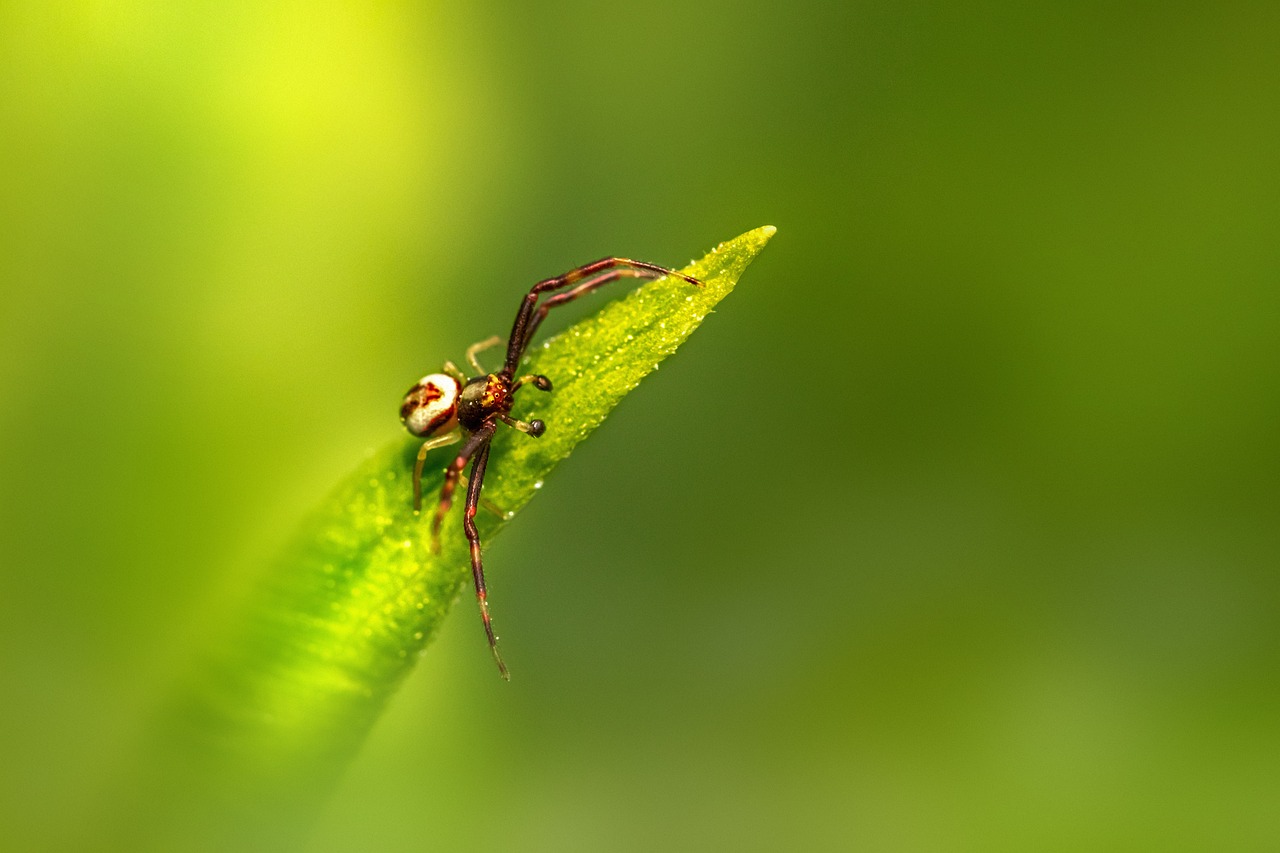The Goldenrod Crab Spider (Misumena vatia) is a fascinating arachnid known for its remarkable camouflage abilities and unique hunting strategies. This species is often found on flowers, where it lies in wait for unsuspecting prey.
Physical Description
The Goldenrod Crab Spider is a small to medium-sized spider, with females typically measuring 6 to 10 mm (0.24 to 0.39 inches) in body length and males being smaller, about 3 to 4 mm (0.12 to 0.16 inches). As its name suggests, this spider often exhibits a bright yellow color, especially when found on goldenrod flowers. However, it can also appear white or pale green, depending on its environment, due to its ability to change color to blend in with its surroundings. The spider’s body is broad and flattened, with long, crab-like front legs that are adapted for grasping prey.
Distribution and Habitat
Misumena vatia is widespread across North America and Europe. It inhabits meadows, gardens, and fields where flowers are abundant. The spider is most commonly seen on goldenrod, daisies, and other composite flowers, where it uses its camouflage to ambush pollinating insects.
Behavior and Diet
The Goldenrod Crab Spider is a sit-and-wait predator, relying on its excellent camouflage to ambush prey rather than spinning webs. It primarily feeds on insects such as bees, flies, butterflies, and other pollinators. The spider remains motionless on a flower until a potential prey item comes within reach. It then quickly grabs the prey with its powerful front legs and delivers a venomous bite to immobilize it. The venom of Misumena vatia is potent enough to subdue insects much larger than the spider itself.
Reproduction and Lifespan
The mating season for Goldenrod Crab Spiders occurs in late spring to early summer. Males actively search for females, often traveling long distances. After mating, the female lays eggs and wraps them in a silk sac, which she attaches to vegetation. She guards the egg sac until the spiderlings hatch, providing protection from predators. The spiderlings disperse after hatching and undergo several molts before reaching adulthood. The lifespan of Misumena vatia is typically one to two years.
Adaptations and Camouflage
One of the most remarkable features of the Goldenrod Crab Spider is its ability to change color. This adaptation allows the spider to blend seamlessly with its floral environment, making it nearly invisible to both prey and predators. The color change process is relatively slow, taking several days, and is achieved by the gradual distribution and concentration of pigments in the spider’s body.
Conservation Status
The Goldenrod Crab Spider is not currently listed as threatened or endangered. It is a common and widespread species with stable populations. However, habitat loss due to agricultural practices and urban development can impact local populations. Conservation efforts focus on preserving natural habitats and promoting biodiversity in agricultural landscapes.
In summary, the Goldenrod Crab Spider (Misumena vatia) is a remarkable example of adaptation and predatory efficiency in the arachnid world. Its ability to camouflage, combined with its effective hunting strategy, makes it a successful and intriguing inhabitant of meadows and gardens. Understanding and conserving its habitat is essential for maintaining the ecological balance and biodiversity of these environments.
Views: 174
Subscribe to the newsletter:
